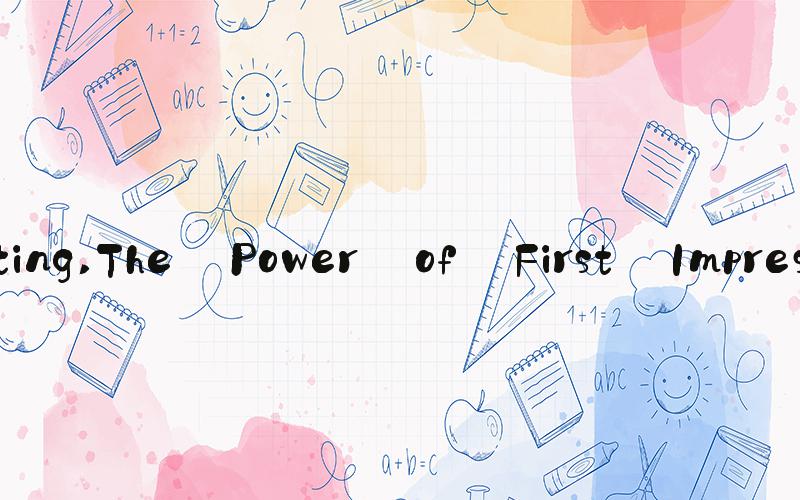
 Greeting: The Importance of Pleasant Communication
Greeting: The Importance of Pleasant CommunicationGreeting is an essential part of human communication. It allows us to establish rapport, build connections, and express respect. Whether we are interacting with friends, colleagues, or strangers, our greetings set the tone for the conversation and influence the outcome. In this article, we will explore the importance of greeting in various contexts and provide tips on how to make your greetings more effective.
The Power of First ImpressionsAs the saying goes, you never get a second chance to make a first impression. When we meet someone for the first time, our initial greeting can make or break the relationship. A warm and sincere greeting can put the other person at ease and create a bond of trust. On the other hand, a cold or insincere greeting can create awkwardness and distance.
In business settings, a good greeting can signal professionalism and competence. It can also show that you value the other person's time and are willing to listen. In social settings, a friendly greeting can help you break the ice and start a conversation. By showing genuine interest in the other person's life, you can build a connection that lasts.
The Different Types of GreetingGreetings come in many forms, from verbal to nonverbal, from formal to informal. Knowing the appropriate greeting for a given situation is crucial. Here are some examples of different types of greeting:
Handshake: A firm handshake is a common greeting in business settings. It can convey confidence and respect. However, be mindful of cultural differences, as some cultures prefer a softer handshake or a different type of greeting altogether.
Bow: In some cultures, a bow is the traditional greeting. It can indicate respect and humility.
Hug: In informal settings, a hug can be a warm and welcoming greeting. However, be respectful of personal boundaries and only offer a hug if you are sure the other person is comfortable with it.
Air kiss: In some cultures, an air kiss (a kiss on each cheek without physical contact) is the customary greeting. It can convey intimacy and familiarity.
Verbal greeting: The most common verbal greeting is "hello" or "hi." However, you can also use more formal greetings such as "good morning," "good afternoon," or "good evening." Using someone's name in your greeting can also personalize the interaction.
Tips for Effective GreetingsTo make your greetings more effective, follow these tips:
Be sincere: A genuine smile and a warm tone of voice can make a huge difference in how your greeting is received. Don't be afraid to show your personality and express your true feelings.
Be mindful of cultural differences: What is appropriate in one culture may be offensive in another. Do your research and learn about the appropriate greeting customs in the context you are in.
Be respectful: Some people may have physical or emotional limitations that make certain greetings uncomfortable. Always be respectful of people's boundaries and preferences.
Use appropriate body language: Your body language can convey confidence, interest, and respect. Stand tall, make eye contact, and use open gestures to show your engagement.
Practice active listening: After your greeting, listen attentively to the other person's response. Show genuine interest in what they have to say and use their words to continue the conversation.
In ConclusionGreeting is an essential part of communication that can help us build relationships and create a positive impression. By using the right type of greeting and following the tips provided in this article, you can make your interactions more effective and enjoyable. Remember, a little effort in your greeting can go a long way in establishing connections that last.
